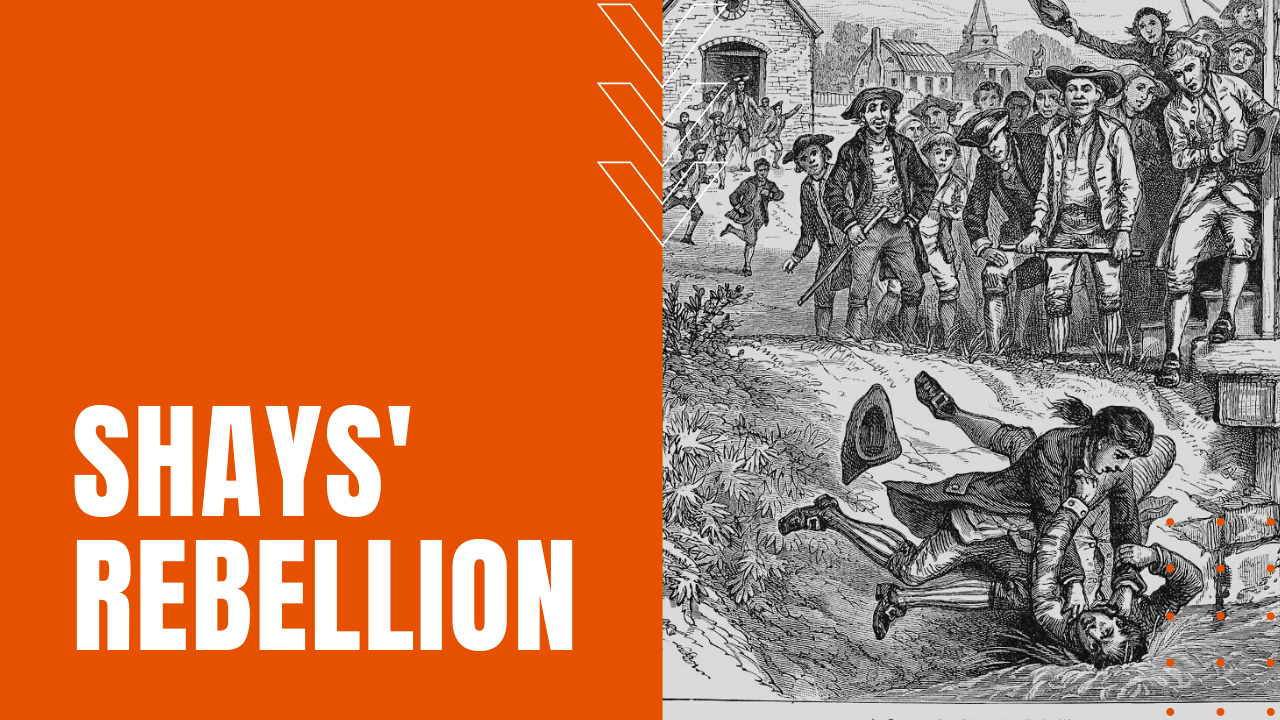Shays’ Rebellion: Peaceful Protests Turn Violent

During the Revolutionary War, American soldiers received little compensation for their heroism, and when many returned to farming after war’s end, by the 1780s, many began to struggle financially under repressive post-war taxation rates intended to pay down federal war-related debts, which were far more punishing than the taxes imposed by the British.
Massachusetts became particularly hard hit, forcing businesses in Boston and elsewhere to demand immediate payment for goods that farmers had previously bought on credit or often paid off through barter. With no currency available to move their crops and pay down their debts, Boston authorities began to arrest delinquent farmers and foreclose on their properties. In August of 1786, farmers in western Massachusetts began to take direct and at first peaceful action against debtors’ courts.
Nonviolent Protest Turns Rebellion
In response to their grievances, town leaders began to draft reforms for the legislature in Boston to enact into law, yet others began to resort to civil disobedience against government officials and institutions. In Northampton, Captain Joseph Hines led several hundred men to block judges from entering the courthouse, while in Worcester, when the militia was called in to clear away hundreds of men blocking that city’s courthouse, the militia refused to fire on their protesting countrymen, instead showing their solidarity with the farmers by joining the courthouse blockade.
A veteran of Bunker Hill, Daniel Shays joined the insurgents in the summer of 1786, and while he refused to directly take a leadership role, his name became synonymous with the rebellions when he led a band of 600 farmers and sympathizers to shut down the courthouse at Springfield. Advocating for peaceful, nonviolent protest, Shays negotiations with General William Shepard allowed the court to remain open while the men protested outside, but when prospective jurors refused to cross the picket line, the court was forced to shutter its doors.
When was Shays’ Rebellion?
On January 26, 1787, after Massachusetts governor James Bowdoin hired a private mercenary army of 4,400 men led by General Shepard, Shays led 1,200 men—with another 1,000 coming up the rear—on a raiding party of the federal arsenal at Springfield. General Shepard predicted the move, creating a menacing blockade of well-armed mercenaries against the approaching insurgents. As the rebels came near, two warning shots were fired over their heads, but when the protesters refused to back down, the militia opened fire, taking the lives of two men, while wounding 20 others.
With the rebellion successfully put down, by the summer of 1787, many participants in the rebellion received pardons from newly-elected Governor John Hancock. Despite the rebel’s defeat, however, the new legislature placed a moratorium on debt collections and cut taxes substantially, showing that sometimes in America, civil protest leads to change.
